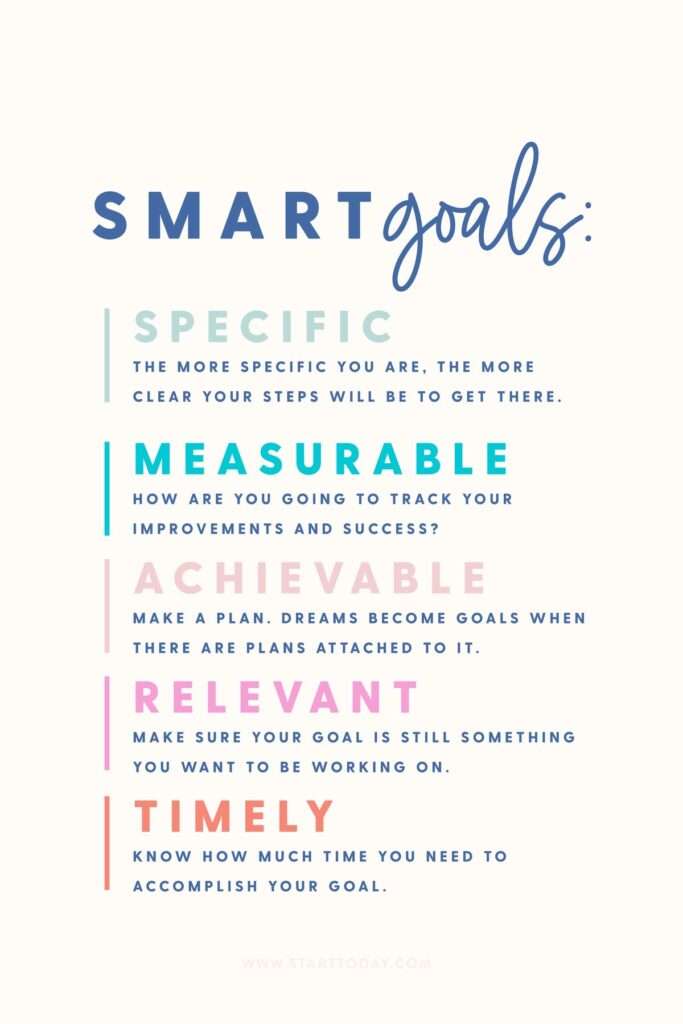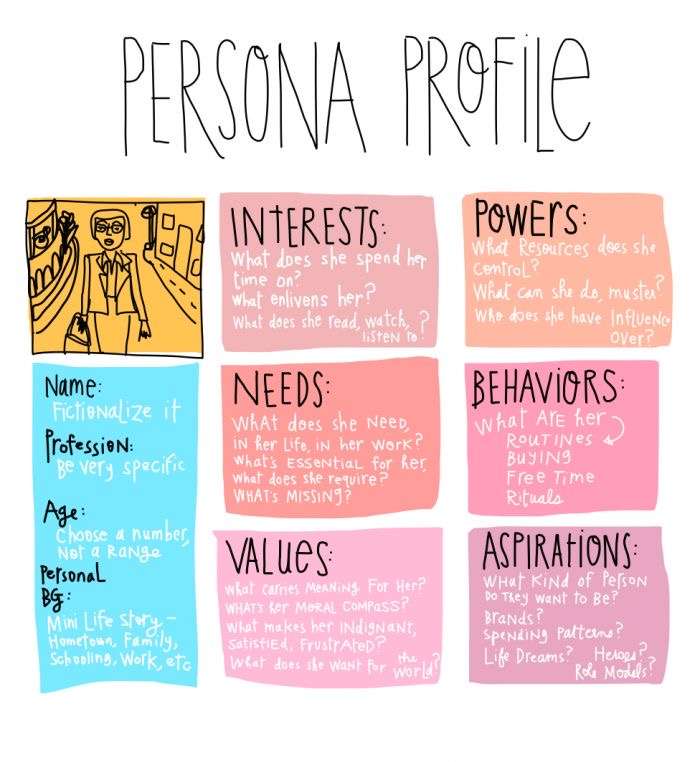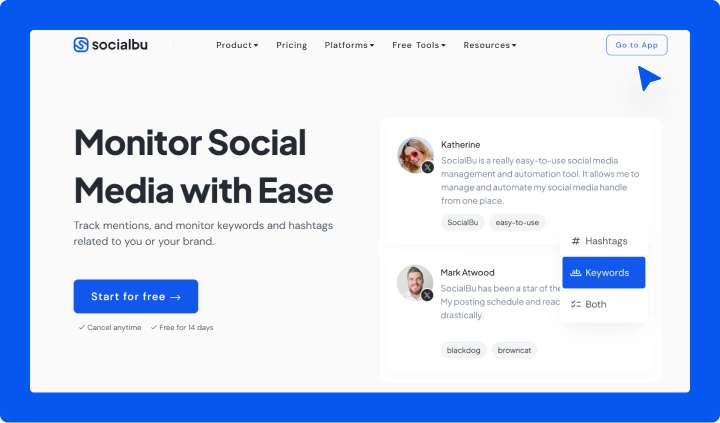Ever feel overwhelmed by social media? You’re not alone. Many businesses struggle to create a consistent and effective social media presence. That’s where a social media plan comes in.
It’s your roadmap to social media success, helping you achieve your goals and engage your audience. This guide will walk you through every step of crafting a winning social media plan, from setting goals to creating engaging content.
So, ditch the social media scramble and get ready to take control with a strategic plan.
Why Do You Need a Social Media Plan?
Imagine this: you walk into a grocery store with a shopping list. It keeps you focused, helps you avoid impulse buys, and ensures you get everything you need.
A social media plan works the same way for your online presence. It prevents you from feeling scattered and unsure of what to post.
Here’s how a social media plan benefits you:
- Boosts Brand Awareness: A consistent social media presence keeps your brand in front of your target audience. The more they see you, the more likely they are to remember you.
- Improves Audience Engagement: A well-crafted plan helps you create content your audience actually wants to see. This leads to more likes, comments, and shares, fostering a stronger connection.
- Ensures Consistent Content Flow: No more scrambling for last-minute posts! A plan helps you schedule content in advance, ensuring a steady stream of fresh content for your followers.
- Streamlines Your Workflow: Planning your posts ahead of time saves you precious time in the long run. You can batch-create content and schedule it for optimal posting times.
- Provides Measurable Results: With a plan, you can track key metrics like follower growth and engagement. This valuable data helps you understand what’s working and what needs improvement.
Setting S.M.A.R.T. Goals for Social Media Success
Before diving headfirst into content creation, it’s crucial to define your social media goals. These goals will be the guiding light for your entire social media strategy.
Aim for S.M.A.R.T. goals: Specific, Measurable, Achievable, Relevant, and Time-Bound.

Here’s what that means:
- Specific: Don’t just say “increase brand awareness.” Be specific. Target a certain percentage increase in brand mentions or website traffic from social media within a set timeframe.
- Measurable: How will you track your progress? Identify key metrics relevant to your goals (e.g., follower growth, website clicks, engagement rate).
- Achievable: Set ambitious but realistic goals. Consider your resources and past performance when setting achievable targets.
- Relevant: Your goals should align with your overall marketing objectives. Are you trying to drive sales, build brand loyalty, or generate leads?
- Time-Bound: Give yourself a specific timeframe to achieve your goals. This creates a sense of urgency and helps you measure progress.
Here are some examples of S.M.A.R.T. social media goals to get you started:
- Increase brand awareness by 20% within 3 months, as measured by website traffic from social media.
- Generate 50 qualified leads per month through social media lead capture forms.
- Boost customer engagement by 15% in 2 months, as measured by likes, comments, and shares.
Know Your Audience

Imagine creating amazing content, but nobody’s there to watch. That’s why understanding your audience is vital for social media success. Here’s what you should uncover about your target audience:
- Demographics: This includes basic information like age, location, gender, and income. Understanding these demographics helps you tailor your content and choose the right platforms.
- Online Behavior: Where do they hang out online? Are they on Facebook, Instagram, or TikTok? Knowing their preferred platforms ensures you reach them in the right places.
- Interests and Pain Points: What are they passionate about? What challenges do they face? By understanding their interests and needs, you can create content that resonates with them and positions you as a helpful resource.
Here are some ways to learn more about your audience:
- Social media analytics: Most platforms offer built-in analytics that reveal demographics and engagement data about your followers.
- Market research: Conduct surveys or focus groups to gather direct feedback from your target audience.
- Competitor analysis: See who your competitors are following and what kind of content resonates with their audience.
By taking the time to understand your audience, you can create content that truly connects with them. Remember, social media is a two-way street.
When you cater to your audience’s interests, you build stronger relationships and foster a loyal following.
Choose the Right Social Media Platforms

Knowing your audience is key, but where do you actually find them online? That’s where choosing the right social media platforms comes in.
With so many options available, it’s tempting to be everywhere at once. But the truth is, it’s better to focus on a few key platforms where your target audience actively engages.
Here’s what to consider when making your decision:
- Platform Strengths: Each platform has its unique strengths. For example, Instagram is known for visual content like photos and videos, while LinkedIn is a professional networking hub. Consider which platform best aligns with the type of content you plan to create and the message you want to convey.
- Audience Activity: Remember, you want to be present where your audience spends their time. Research which platforms your target demographic uses most frequently. This ensures your content reaches the right eyes.
- Content Types: Think about the types of content you excel at creating. If you have a knack for storytelling, Twitter might be a good fit. If stunning visuals are your strength, Instagram could be your champion. Choose platforms that allow you to showcase your best content.
Here’s a quick rundown of some popular platforms and their strengths:
- Facebook: A broad platform reaching a wide audience, ideal for sharing a variety of content formats.
- Instagram: Focuses on high-quality visuals, perfect for showcasing products, sharing behind-the-scenes glimpses, and running eye-catching ads.
- Twitter: Great for real-time conversations, industry updates, and sharing bite-sized content.
- LinkedIn: A professional networking platform ideal for B2B businesses, thought leadership content, and job postings.
- Pinterest: A visual discovery engine perfect for sharing infographics, product inspiration, and DIY ideas.
Build Your Social Media Content Calendar
A social media content calendar keeps you organized, ensures variety, and helps you plan and schedule content in advance.
Here’s how it benefits you:
Content Variety and Consistency
No more scrambling for last-minute ideas. A calendar helps you plan a mix of content types (images, videos, articles) to keep your audience engaged. Consistency is key, so scheduling posts in advance ensures a steady flow of fresh content.
Optimal Posting Times
Different platforms have peak engagement times. A calendar allows you to schedule posts for these times, maximizing your reach and engagement.
Team Collaboration
Working with a team? A shared content calendar keeps everyone on the same page, ensuring a smooth workflow and clear division of responsibilities.
Now, let’s get started building your content calendar! Here are some key elements to include:
- Date and Time: Schedule your posts for optimal reach based on platform algorithms and your target audience’s activity.
- Content Type: Indicate whether it’s an image, video, blog post, or another format to ensure variety in your content mix.
- Platform: Specify which platform the content is intended for (Facebook, Instagram, etc.).
- Content Topic: Briefly describe the topic of the post for easy reference.
- Caption/Description: Draft a catchy caption or description to accompany your post.
- Hashtags: Include relevant hashtags to increase discoverability.
- Notes: Use this section for any additional details or reminders related to the post.
Create Captivating Content
So you’ve got your social media plan in place, complete with a content calendar. Now comes the fun part: crafting engaging content that stops the scroll and keeps your audience hooked.
People don’t want to be bombarded with sales pitches. They crave content that informs, entertains, or inspires them. Here are some tips to create content that resonates with your audience:
- Content Pillars: Define your core content themes. These pillars will guide your content strategy and ensure consistency. For example, a bakery’s content pillars might be delicious recipes, baking tips, and behind-the-scenes glimpses.
- Content Variety: Mix things up. Don’t just rely on photos. Experiment with videos, infographics, blog posts, polls, and live Q&A sessions. This keeps your audience engaged and caters to different preferences.
- High-Quality Visuals: People are drawn to visually appealing content. Use high-quality photos and videos that grab attention and reflect your brand image.
- Storytelling: Weave stories into your content. People connect with narratives, so use them to showcase your brand values, highlight customer experiences, or share the story behind your product.
- Compelling Captions: Don’t underestimate the power of words! Craft captions that are informative, engaging, and encourage interaction. Ask questions, use humor strategically, and spark conversation.
- Trending Topics: Stay on top of industry trends and current events. Jump on relevant hashtags and create content that capitalizes on trending topics while staying true to your brand identity.
Social Media Plan Templates
Crafting a social media plan can feel overwhelming, but don’t worry, we’ve got you covered. Here are some templates to get started with your social media planning:
Google Sheets Content Calendar
These templates are a valuable starting point and you can modify them to fit your workflow and brand.
Scheduling and Posting Your Content
Now you’ve got a winning social media plan, captivating content calendar, and even free downloadable templates to get you started.
But how do you ensure your amazing content reaches your audience at the right time? That’s where social media scheduling tools come in and here’s why SocialBu might be the perfect fit for you:

- Effortless Scheduling: Schedule your posts for optimal reach across all your social media platforms from a single dashboard. Say goodbye to logging in and out of different platforms!
- Visual Content Calendar: SocialBu offers a visual calendar that provides a clear overview of your planned content, making it easy to track your social media strategy at a glance.
- Collaboration Features: Working with a team? SocialBu allows for seamless collaboration, enabling team members to review and approve content before it goes live.
- Analytics and Reporting: Track your social media performance with insightful reports. SocialBu provides data on engagement, reach, and website traffic, helping you measure the success of your efforts.
- Social Inbox: Manage all your social media comments and messages in one central location, streamlining your communication and improving response time.
- Engagement Tools: Run contests, polls, and quizzes to boost audience engagement and generate valuable insights about your followers.
Whether you’re a solopreneur or managing a large team, SocialBu can be your social media management sidekick. Try the free trial to experience the power of scheduling and streamlined social media management firsthand.
Tracking and Measuring Results: Proof is in the Posting!
Imagine putting in all this effort to create a social media plan and craft amazing content, but having no idea if it’s actually working.
That’s why tracking and measuring your results is crucial and here are the reasons why it matters:
- Identify What’s Working: See which content types resonate most with your audience. Are they loving your videos or devouring your blog posts? Tracking metrics helps you identify what’s driving results and allows you to double down on those winning strategies.
- Uncover Areas for Improvement: Maybe your follower growth has stalled, or engagement on your posts seems low. Tracking reveals areas that need improvement and allows you to adjust your approach accordingly.
- Demonstrate ROI (Return on Investment): Social media isn’t just about likes and comments. It’s about achieving your business goals. By tracking metrics like website traffic or leads generated, you can demonstrate the return on investment (ROI) of your social media efforts.
Here are some key social media metrics to track:
- Likes, Shares, and Comments: These engagement metrics indicate how well your content resonates with your audience.
- Click-Through Rates (CTR): This measures how often people click on the links you share in your posts. A high CTR suggests your audience is interested in what you have to offer.
- Follower Growth: Track your follower growth over time. While follower count isn’t everything, it’s an indicator of your reach and brand awareness.
- Website Traffic from Social Media: See how much traffic your social media efforts are driving to your website. This is a crucial metric for businesses that use social media to generate leads or sales.
Most social media platforms offer built-in analytics tools to help you track these metrics. There are also advanced social media management tools like SocialBu (mentioned earlier) that provide comprehensive reporting and in-depth analytics.
Final Words
With a well-crafted social media plan and the tips outlined above, you’re well on your way to conquering the online world.
Remember, it’s a journey, not a sprint. Be patient, track your results, and keep creating engaging content that resonates with your audience.
FAQs
How do I create a social media plan?
To create a social media plan, define your goals, research your audience, choose the right platforms, craft a content calendar, schedule your posts, and track your results.
What are the 6 steps to a social media plan?
While there isn’t a one-size-fits-all approach, a typical social media plan can be broken down into 6 steps: Set goals, define your target audience, choose platforms, create a content calendar, schedule posts, and track and analyze results.
What’s included in a social media plan?
A social media plan typically includes your goals, your target audience demographics and interests, chosen platforms, a content calendar outlining content types and posting times, and metrics you’ll track to measure success.
What is a 6 month social media strategy?
A 6-month social media strategy expands on your social media plan by outlining specific content themes or campaigns for a 6-month timeframe. It helps you plan ahead and ensure consistency in your social media efforts.







